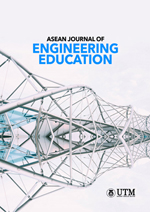A Comparative Study of Approaches in the Engineering Education System in Malaysia, Singapore, and Finland
DOI:
https://doi.org/10.11113/ajee2024.8n1.157Keywords:
engineering, methods, education, challenges, learning structuresAbstract
This review compares engineering education in Malaysia, Singapore, and Finland, exploring their unique approaches. The purpose of this paper is to discuss, examine, and compare how the learning structure, teaching methods, and challenges in the engineering education system in three selected countries. In Malaysia, the curriculum involves pre-university education and internships, tailored to meet industry requirements. This paper also examines holistic education initiatives of two high-performing education systems—Finland and Singapore. Finland and Singapore are two nations enjoying enviable rankings in international testing benchmarks for academic subjects at all levels. Singapore emphasizes STEM education and a student-centred curriculum. Meanwhile, Finland distinguishes itself with innovative, student-focused learning, promoting collaboration and problem-solving. Teaching methods in Malaysia involve discussion, inquiry, and emerging tech like Augmented Reality. Singapore focuses on STEM, student-centred learning, and 21st-century skills. Finland prioritizes personalized, problem-based learning and collaborative projects. While each country has its strengths, challenges persist. Malaysia aims for a dynamic curriculum, facing issues like teacher competency. Singapore needs a more tech-driven system and industry-academia collaboration. Finland addresses globalization, teacher attraction, and funding for educational improvements. Overall, the study presents the outcome that can help to understand learning structure, teaching methods, and challenges in the engineering education system in Malaysia, Singapore, and Finland.



















